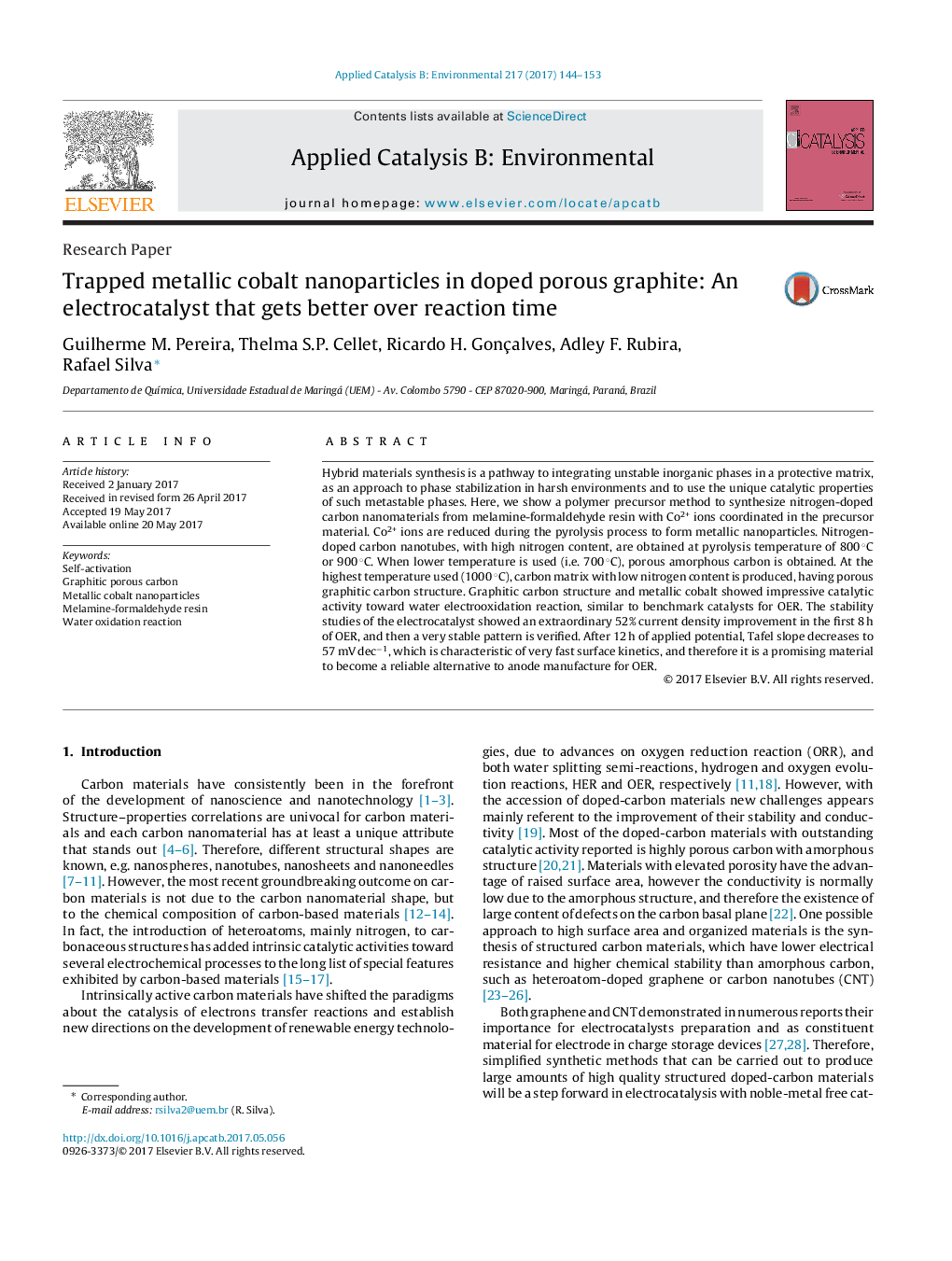| کد مقاله | کد نشریه | سال انتشار | مقاله انگلیسی | نسخه تمام متن |
|---|---|---|---|---|
| 6453925 | 1418803 | 2017 | 10 صفحه PDF | دانلود رایگان |

- Co0 nanoparticles embodied in porous graphite from melamine-formaldehyde resin pyrolysis.
- Different carbon structures with embodied metallic CoNPs are obtained, from amorphous carbon to helicoidal carbon nanotubes and porous graphitic carbon.
- The catalysts present self-activation behavior for OER, with around 50% current increase after 12Â h of use.
- Co@ porous graphite has catalytic activity comparable to RuO2 and IrO2, but superior stability.
Hybrid materials synthesis is a pathway to integrating unstable inorganic phases in a protective matrix, as an approach to phase stabilization in harsh environments and to use the unique catalytic properties of such metastable phases. Here, we show a polymer precursor method to synthesize nitrogen-doped carbon nanomaterials from melamine-formaldehyde resin with Co2+ ions coordinated in the precursor material. Co2+ ions are reduced during the pyrolysis process to form metallic nanoparticles. Nitrogen-doped carbon nanotubes, with high nitrogen content, are obtained at pyrolysis temperature of 800 °C or 900 °C. When lower temperature is used (i.e. 700 °C), porous amorphous carbon is obtained. At the highest temperature used (1000 °C), carbon matrix with low nitrogen content is produced, having porous graphitic carbon structure. Graphitic carbon structure and metallic cobalt showed impressive catalytic activity toward water electrooxidation reaction, similar to benchmark catalysts for OER. The stability studies of the electrocatalyst showed an extraordinary 52% current density improvement in the first 8 h of OER, and then a very stable pattern is verified. After 12 h of applied potential, Tafel slope decreases to 57 mV decâ1, which is characteristic of very fast surface kinetics, and therefore it is a promising material to become a reliable alternative to anode manufacture for OER.
229
Journal: Applied Catalysis B: Environmental - Volume 217, 15 November 2017, Pages 144-153